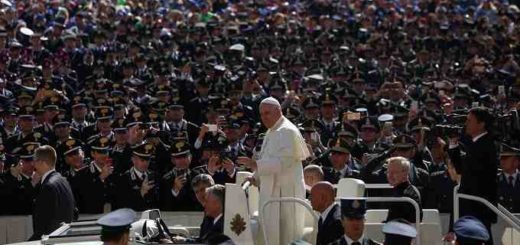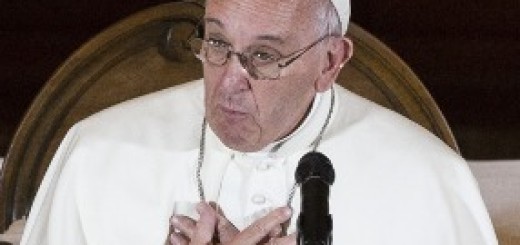This 3D “carbon copy” of Jesus was created using the Shroud of Turin

ALETEIA
2 May 2018

Lucandrea Massaro
 Nikola Tesla (1856-1943) was physicist, engineer and an inventor. He was a pioneer scientist during the turn of the 20th century. He was best known for his contributions to the design of the modern alternating current (AC) electricity supply system. Tesla was a physicist, mechanical and electric engineer, inventor and futurist, as well as the possessor of a near-eidetic memory. He spoke eight languages and held 300 patents by the end of his life. Tesla was not a particularly religious man, but he had respect for the discipline and sense of meaning at the core of most religions. Below, he explains why science and religion are perfectly compatible… it's dogma that causes the problem:
Nikola Tesla (1856-1943) was physicist, engineer and an inventor. He was a pioneer scientist during the turn of the 20th century. He was best known for his contributions to the design of the modern alternating current (AC) electricity supply system. Tesla was a physicist, mechanical and electric engineer, inventor and futurist, as well as the possessor of a near-eidetic memory. He spoke eight languages and held 300 patents by the end of his life. Tesla was not a particularly religious man, but he had respect for the discipline and sense of meaning at the core of most religions. Below, he explains why science and religion are perfectly compatible… it's dogma that causes the problem:
"There is no conflict between the ideal of religion and the ideal of science, but science is opposed to theological dogmas because science is founded on fact."
Though by convention religion and science are portrayed to be always in contention with each other, deconstructed, they can be complementary to each other, as music and science are. Sure, religion is more rooted in the pursuit of truth while science is a system of fact-based conjecture, but that doesn't mean they necessarily have to be mutually exclusive or antagonistic. Religion is a set of values by which one tries to live one's life. It tends to be at its worst when the dogmatic ideals underpinning those values go overboard.
Pope Francis, for instance, famously echoed the modern Catholic stance that the Church and science can and should coexist. This is proven by Pope John Paul II when in November 1992, exactly 359 years after the Inquisition in 1633, he officially declared that Galileo was right his theory that the Earth moves around the Sun. Under threat of torture, Galileo, facing his inquisitors, recanted. But as he left the courtroom, he is said to have muttered, ‘all the same, it moves’. The formal admission by the Vatican was based on the findings of a committee of the Academy the Pope set up in 1979, soon after taking office. The committee decided the Inquisition in 1633 (Galileo died on January 8, 1642) was wrong.
It is on the above premises that the Church and science can and should coexist, readers must look at the scientific narrative of Professor Giulio Fanti of the University of Padua, who created a “carbon copy” in 3D which, he claims, allows him to affirm that these are the true features of the crucified Christ. He said with conviction that Jesus was long-limbed, but very robust, he was nearly 5 ft. 11 in. tall, whereas the average height at the time was around 5 ft. 5 in. And he had a regal and majestic expression.”
The report in Aleteia (courtesy The Tablet – DeSales Media) of this scientific conclusion is nothing short of a miracle in the Easter Season. Isaac Gomes, Asso. Editor, Church Citizens' Voice.
"We believe that we have the precise image of what Jesus looked like on this earth," said Professor Giulio Fanti of the University of Padua.
“This statue is the three-dimensional representation in actual size of the Man of the Shroud, created following the precise measurements taken from the cloth in which the body of Christ was wrapped after the crucifixion,” explains Giulio Fanti, teacher of mechanical and thermal measurements at the University of Padua, who studies the Shroud. Based on his measurements, the professor has created a “carbon copy” in 3D which, he claims, allows him to affirm that these are the true features of the crucified Christ.


 Slideshow images: YouTube/TgPadovaTelenuovo
Slideshow images: YouTube/TgPadovaTelenuovo
“Therefore, we believe that we finally have the precise image of what Jesus looked like on this earth. From now on, He may no longer be depicted without taking this work into account.” The professor granted exclusive coverage of his work to the weekly periodical Chi, to which he revealed: “According to our studies, Jesus was a man of extraordinary beauty. Long-limbed, but very robust, he was nearly 5 ft. 11 in. tall, whereas the average height at the time was around 5 ft. 5 in. And he had a regal and majestic expression.” (Vatican Insider)
Through the study and three-dimensional projection of the figure, Fanti was also able to count the numerous wounds on the body of the man of the Shroud:
“On the Shroud,” the professor explains, “I counted 370 wounds from the flagellation, without taking into account the wounds on his sides, which the Shroud doesn’t show because it only enveloped the back and front of the body. We can therefore hypothesize a total of at least 600 blows. In addition, the three-dimensional reconstruction has made it possible to discover that at the moment of his death, the man of the Shroud sagged down towards the right, because his right shoulder was dislocated so seriously as to injure the nerves.” (Il Mattino di Padova)

The questions surrounding the mystery of the Shroud are still intact; certainly, in that tortured man we see the signs of suffering in which we find also a piece of each one of ourselves, but also—seen by the eyes of faith—hope that this man was not just anyone, but the Man par excellence, that “Behold the Man” who appeared docilely before Pilate and who, after the terrible flagellation, was raised up on the cross as an innocent man; not only innocent, but taking upon himself the guilt of all people. While belief in the Shroud is not obligatory, even for Christians, the exceptionality of that piece of linen remains there to challenge our understanding and our certainties, almost like a certain Jesus of Nazareth, who challenged our certainties by loving his persecutors, forgiving them from the cross, and conquering death, 2,000 years ago …
This article first appeared in the Italian edition of Aleteia.

















